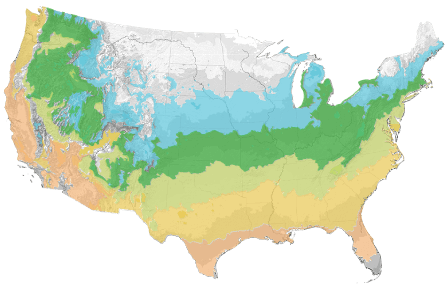You're growing in this Zip Code:
Change LocationMiss Violet Butterfly Bush
Buddleja davidii 'Miss Violet' PP #28,448; CPBRAF
Retailers Near You
No Retailers found within 50 miles of your zipcode
Be Inspired: How to Use this Plant
| Bloom Time | Summer through fall |
|---|---|
| Deciduous/Evergreen | Deciduous |
| Special Features | Attracts Butterflies, Attracts Hummingbirds, Easy Care, Waterwise, Compact Form, Benefits Birds |
| Problems/Solutions | Deer Resistant, Rabbit Resistant |
| Growth Rate | Moderate |
| Flower Attributes | Flowers for Cutting, Fragrant, Long Bloom Season, Showy Flowers |
| Patent Act | Asexual reproduction of plants protected by the Plant Patent Act is prohibited during the life of the patent. |
| Landscape Use | Border, Container |
| Design Ideas | A vital component of wildlife and butterfly habitat gardens. Gorgeous flowers deserve placement in foundation plantings where flowers are held near windows to enjoy butterfly visitors from indoors. A good background for perennial and mixed borders. Add to old fashioned flowering shrub compositions for Victorian, country and cottage landscapes. Makes an interesting informal screen along property lines that's not too dense to allow air and light to pass through. Ideal for large rural and suburban sites. |
| Flower Color | Purple |
| Foliage Color | Green |
| Companion Plants | Black-Eyed-Susan (Rudbeckia); Milkweed (Asclepias); Salvia (Salvia); Heliotrope (Heliotropium); Tickseed (Coreopsis); Coneflower (Echinacea) |
| Care Instructions | Prefers well-drained, fertile soil. Water deeply, regularly during first growing season to establish extensive root system; reduce frequency once established. Clip spent flowers to promote continued bloom. May die to the ground in colder zones, regrowing from the roots in spring. Elsewhere, prune in late fall or early spring. Feed in spring. |
| Lore | Butterfly bush is named for its ecological relationship to butterflies. It's large flowers draw all species which seek its rich source of nectar. This Chinese native can be found in thickets and wetland habitats along rivers and streams, where Jesuit missionaries, the first westerners to enter that region, discovered it. |
| Bloom Time | Summer through fall |
|---|---|
| Deciduous/Evergreen | Deciduous |
| Special Features | Attracts Butterflies, Attracts Hummingbirds, Easy Care, Waterwise, Compact Form, Benefits Birds |
| Problems/Solutions | Deer Resistant, Rabbit Resistant |
| Growth Rate | Moderate |
| Flower Attributes | Flowers for Cutting, Fragrant, Long Bloom Season, Showy Flowers |
| Patent Act | Asexual reproduction of plants protected by the Plant Patent Act is prohibited during the life of the patent. |
| Landscape Use | Border, Container |
|---|---|
| Design Ideas | A vital component of wildlife and butterfly habitat gardens. Gorgeous flowers deserve placement in foundation plantings where flowers are held near windows to enjoy butterfly visitors from indoors. A good background for perennial and mixed borders. Add to old fashioned flowering shrub compositions for Victorian, country and cottage landscapes. Makes an interesting informal screen along property lines that's not too dense to allow air and light to pass through. Ideal for large rural and suburban sites. |
| Flower Color | Purple |
| Foliage Color | Green |
| Companion Plants | Black-Eyed-Susan (Rudbeckia); Milkweed (Asclepias); Salvia (Salvia); Heliotrope (Heliotropium); Tickseed (Coreopsis); Coneflower (Echinacea) |
| Care Instructions | Prefers well-drained, fertile soil. Water deeply, regularly during first growing season to establish extensive root system; reduce frequency once established. Clip spent flowers to promote continued bloom. May die to the ground in colder zones, regrowing from the roots in spring. Elsewhere, prune in late fall or early spring. Feed in spring. |
|---|
| Lore | Butterfly bush is named for its ecological relationship to butterflies. It's large flowers draw all species which seek its rich source of nectar. This Chinese native can be found in thickets and wetland habitats along rivers and streams, where Jesuit missionaries, the first westerners to enter that region, discovered it. |
|---|
Retailers Near You
No Retailers found within 50 miles of your zipcode
Retailers Near You
No Retailers found within 50 miles of your zipcode
Buy Online
We cannot currently ship this product to your zip code.
About Us
We have been pioneers and craftsmen in the art of growing plants for nearly
100 years. Since our founding in Southern California by Harry E. Rosedale, Sr.
in 1926, we have been absolutely dedicated and obsessed with quality.
We have been pioneers and craftsmen in the art of growing plants for nearly 100 years. Since our founding in Southern California by Harry E. Rosedale, Sr. in 1926, we have been absolutely dedicated and obsessed with quality.








